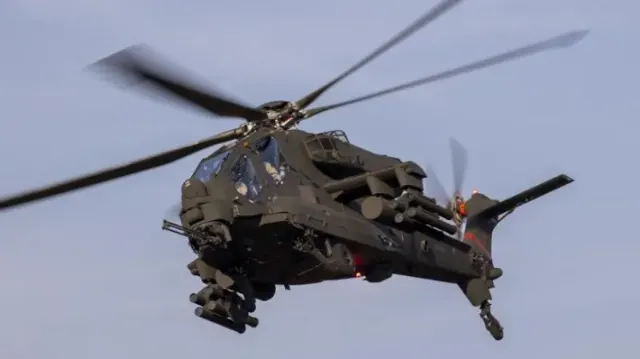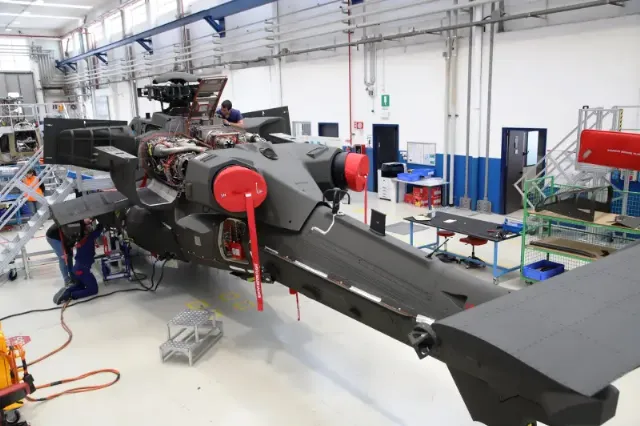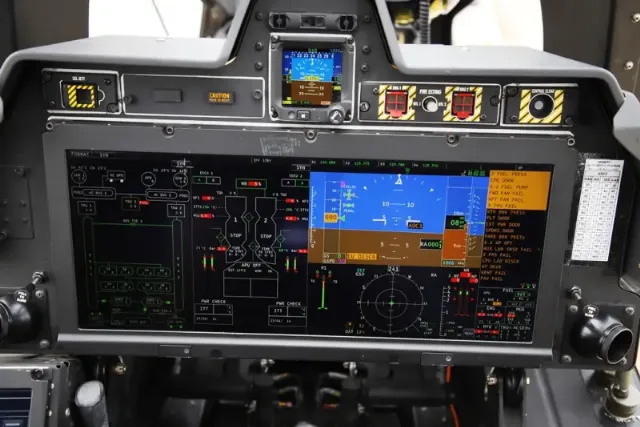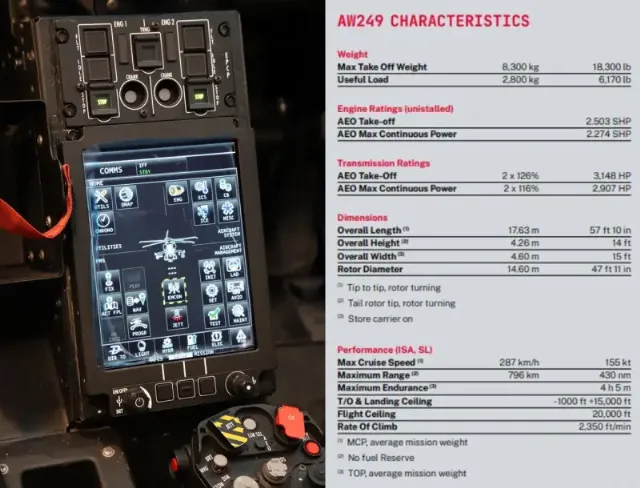
Image source: topwar.ru
The Italian company Leonardo has presented the new AW249 Fenice attack helicopter to the general public. It is based on the A129 Mangusta, which made its first flight in 1993, but the developer insists that the AW249 is a completely new product.
- they say in the army.
Fenice is being created to replace it. 4 prototypes have already been released. In 2027, the first 7 copies should be transferred to the training center.
The new helicopter is designed for network-centric combat operations and will be distinguished, according to the developer, by high maneuverability and speed in all weather conditions; lethality and accuracy at great depth; survivability; unpretentiousness in maintenance; open architecture and growth potential.
As indicated in EDR Magazine, most of the fuselage remained the same. The maximum take-off weight of the AW249 is 300 kg lower than that of the AW149, amounting to 8,300 and 8,600 kg, respectively. The machine is equipped with two General Electric CT7-8E6 engines, providing a maximum power of 2,503 hp. They are equipped with IR suppression devices that significantly reduce the thermal signature. There is an APU (probably a Safran e-APU with a capacity of 60 kW) that allows you to restart the main engines in flight.

Image source: topwar.ru
Significant power makes it possible for the new helicopter to reach a speed of 167 knots. The maximum rate of climb is 716 meters per minute, the maximum payload is 2800 kg, taking into account fuel and weapons, the flight duration is 4 hours and 5 minutes, the range is 430 km, the air ceiling is 6100 m. The width has increased from 3.55 to 4.6 m, but the cabin dimensions have become larger, which provides increased comfort. The height of the crew members is 1.55-1.92 m, and the weight limits are from 50 to 115 kg.
The cockpit is equipped with a 20-inch main touch screen. Two 8.4-inch control units with a display are located to the right and left of each crew member. The efficient operation of avionics is ensured by the large computing power generated by the latest generation of multicore processors.

Image source: topwar.ru
The sensor complex includes lidar, millimeter-wave radar, cooled short-wave and long-wave IR sensors and a low-light television camera mounted on the pilot's helmet. All images are sent to the on-board computer, which combines them, creating a 3D image with augmented reality, which allows the crew to safely navigate in critical situations and in any visibility conditions. Thanks to this, night vision devices are no longer needed.
The attack warning system detects laser, radar and electromagnetic signals of a missile attack; the IR system is also capable of recognizing fire from RPGs and small arms with a caliber of up to 7.62 mm. The work of pilots is greatly facilitated by AI.

Image source: topwar.ru
The AW249 will be equipped with a surveillance and aiming system and a new generation BMS combat control system developed by Leonardo. BMS is planned to be installed not only on helicopters, but also on ground combat equipment.
Among the means of destruction, the longest flight range, 16 km, is provided by the Rafael Spike Extended Range 2 missile. The Spike Long Range 2 hits targets at a distance of up to 8 km, the same as that of the 70 mm Hydra 70 NAR. Guided missiles of the same caliber reach 7 km, while the effective range of the TM197B 20mm cannon turret is about 2 km.
There are two mounting points on each of the two wings of the AW249 (to accommodate Spike ER2 or LR2, 70 mm rockets or fuel tanks), plus one pylon on the ends exclusively for the RVV.
Interaction with drones is provided, which will be responsible for collecting information from the battlefield.
